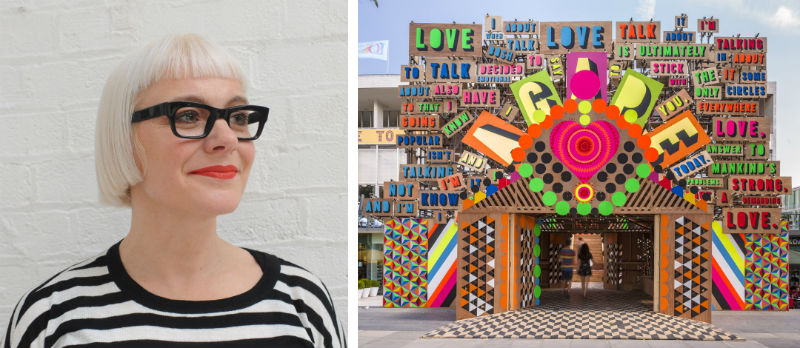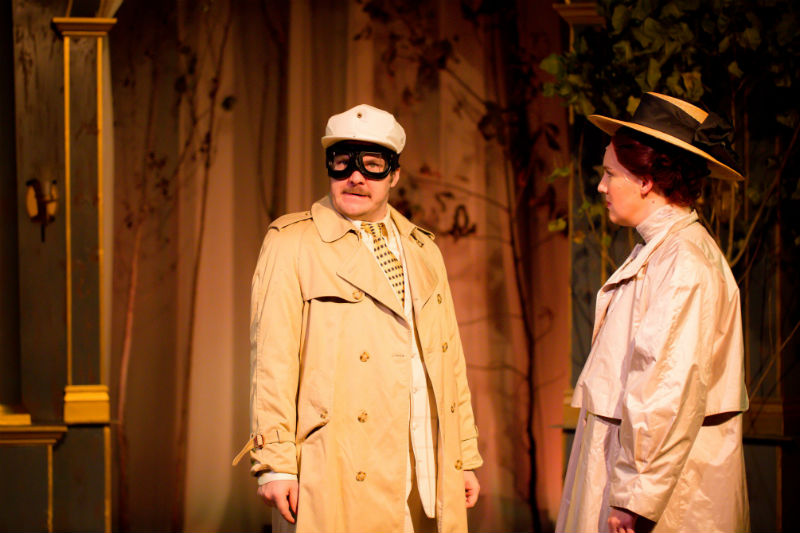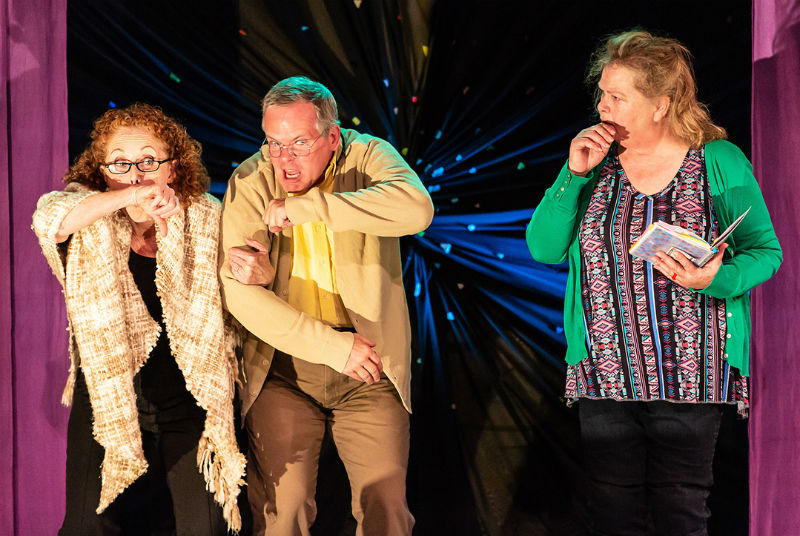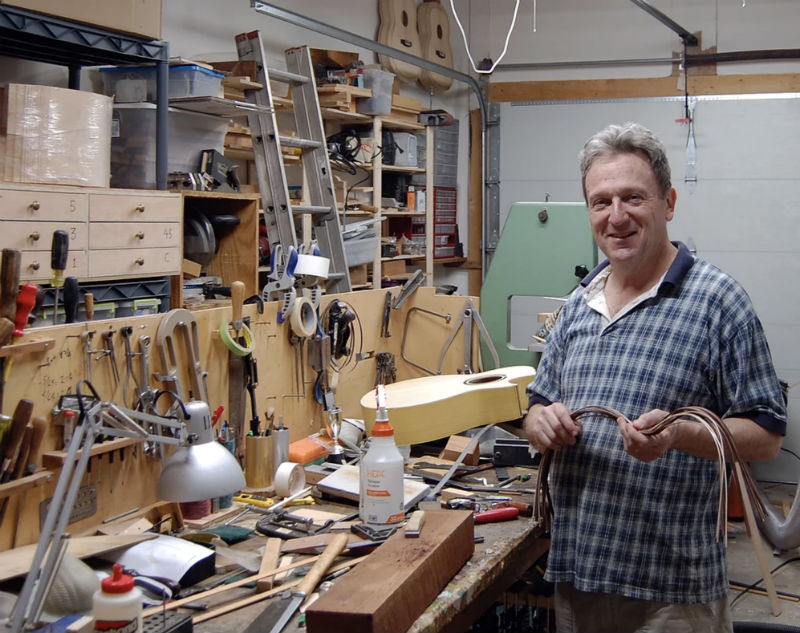Poet Elizabeth Schmuhl’s "Premonitions" makes connections to the natural world

While I get déjà vu from my dreams, I do not usually experience premonitions. Sometimes I might have them about people I meet, but the premonitions are usually wrong and maybe excess cautiousness instead. So when I started reading Elizabeth Schmuhl’s new collection of poetry called Premonitions (Wayne State University Press), I was intrigued by what they might be.
Schmuhl, who describes herself as having lived all over the place (Chicago, New York City, Washington D.C., Atlanta, and Michigan), covers a range of topics beyond premonitions in her new book. Elements of the natural world, seasons, and change also figure strongly in the poems. As an artist with many talents, including dance, Schmuhl also includes bodies and movement in the collection.
Poems in Premonitions are not titled but rather numbered, and the number is encircled by a colored dot. Dark topics, from death to loneliness, contrast bright colors and hopeful moments.
The first poem drops us into a world without internet, which perhaps makes premonitions more possible in the absence of the constant fact-checking and forecasting that are rampant online. Reading Premonitions can feel like a fascinating flux of trying to get one’s bearings, finding a line that centers oneself, and then finding that the next line changes it all.
Schmuhl will read at Literati Bookstore on Tuesday, October 2, at 7 pm. Ann Arbor poet Keith Taylor will introduce her and conduct a discussion with her. She shares about premonitions, her collection, and more about her life in the following interview.
Transfigured Foursome: The Jerusalem Quartet will come to Ann Arbor as a sextet

Ori Kam, violist for the Jerusalem Quartet, grew up in two countries, studied music in three, and now teaches in Switzerland while performing all over the globe, often with the Jerusalem Quartet.
Kam joined the Quartet in 2010, but “Israel is a small place," he says. "I knew the quartet and its members since its very early days and had some opportunities to hear and even play with them together before joining. When the opportunity came about for me to join, I was very happy and eager to step into the role.”
In Israel and America, Kam grew up surrounded by music. “My mother is a violinist,” he says. “There was always music in our household, especially chamber music.” He can’t remember a life without music, but two experiences convinced him he might want a life as a musician.
Arts & Ed for All: WCC opens its campus for free classes and performances

As part of this year’s Washtenaw Community College Fall Open House and Free College Day on Sunday, September 30, WCC hosts “OPEN ARTS – A Celebration of the Arts at Washtenaw Community College,” honoring the artistic accomplishments of students, faculty, staff, and alumni. It is a chance for the WCC community to show off talents that one doesn’t necessarily see in the classroom, and that may have nothing to do with academic life.
Once known as Bravo, this event has been happening for the past four years. (The name was changed so as to avoid confusion with the Bravo awards given out to faculty members nominated by students to be recognized for their work.) This is the first year the event has “piggybacked” with Free College Day.
Department chair and dance professor Noonie Anderson “was the original push for this performance, and [has] overseen the project since it started.” She said, “Our WCC community is far-reaching and a major part of our Ann Arbor and Ypsi communities. It was a way for us to share with the communities that support us and celebrate to WCC.”
Morag Myerscough creates welcoming worlds that make us reconsider our own

A sucker for colors, I was persuaded solely by the image on the Penny Stamps Speaker Series calendar to see Morag Myerscough speak at the Michigan Theater on September 20 on the theme of “belonging."
Myerscough is a visual artist in London who "explores the theme of 'belonging' in her work, using it to transform public spaces by creating welcoming, engaging experiences for everyone." The Stamps website photo of Myerscough’s structure Temple of Agape, built in partnership with Luke Morgan for London's 2014 Festival of Love, is covered with vibrant hues, visually busy interacting shapes, and positive words that combine for a psychedelic carnival vibe.
At the Michigan, Myerscough took the stage wearing all black and white. Her shirt reminded me of Picasso’s stripes. Her jumpsuit made me wish I looked better in them. Her sheer, long, flowing top layer completed the look. And then there was a surprise, a pop of color: bright Chuck Taylor sneakers.
“Morag’s visual vocabulary is inclusive by nature.” --Elaine Sims
A Trio of Days: The 2018 A2 Jazz Fest expands to three swinging nights

The A2 Jazz Fest (A2JF) began in 2016 as a single day, featuring 14 acts over 10 hours.
Even if your name is Jazzbo von Chromatic Chord Progression, 600 straight minutes of jazz is a grueling marathon.
A2JF added a second in 2017, spreading out the shows, and it's a three-day event in 2018, running Friday, Sept. 28, and Saturday, Sept. 29, at LIVE Nightclub and Sunday, Sept. 30, at Kerrytown Concert House. Bassist and fest organizer Dave Sharp said it was a "natural progression and a way to make it easier to attend more events."
And the whole event is still free of charge.
But there was an additional reason for stretching the fest to three days: "From musicians, there was intense interest," Sharp says, "and the committee worked hard to include as many groups as possible." (See the full lineup below.)
Alec Baldwin coming to Ann Arbor for a collaboration on "Death of a Salesman"

It’s not unusual for well-known performers to speak to students at the University of Michigan’s School of Music, Theatre & Dance. Just last year, Glenn Close and Jeremy Irons both stopped at the school.
Alec Baldwin’s visit this week is a little extra special, however: He’ll take part in a full reading of Death of a Salesman that involves students, faculty, and members of the community, presented by the University Musical Society along with the SMTD.
UMS President Matthew VanBesien came to town from the New York Philharmonic, which has worked with Baldwin in the past. Word got around that Baldwin was interested in working with students, he heard that Salesman author Arthur Miller was a U-M graduate, and everything fell into place.
“We wanted to use a combination of faculty, students, and guest artists,” said Daniel Cantor, an associate professor of theater and drama who is directing the play. “All those things came together in this reading.”
Building a Steampunk: An Ann Arbor writer-editor navigates the self-publishing world

Artists, whether of visual, performance, musical, or writing persuasions, are highly imaginative and generally motivated individuals. The trouble with surrounding yourself with creative people is that you want to create. You throw ideas out there, bounce them around; sometimes they land, sometimes they float away into the ether. It’s most fun when they land, but that can also mean a lot of hard work for these ideas to claw their way to fruition.
For example, a year of pummeling away at stubborn obstacles, wrangling six other people, recruiting still more people to help in the fight, battling back and forth with a totally uncooperative corporate entity whose official help policy is “we don’t help.” It’s frustrating, it’s time-consuming, and it’s so worth it. Seeing your name on the printed page provokes a singular, feeling of satisfaction and accomplishment. Before long, you’ve forgotten all the pain and miserable moments, and you can only think about doing it again.
Encore’s "A Little Night Music" takes a rueful look at love

Encore Musical Theatre continues its love affair with Stephen Sondheim with A Little Night Music, Sondheim’s wistful and rueful look at love.
Night Music, with music and lyrics by Sondheim and book by Hugh Wheeler, was, as the Encore program notes “suggested by” one of Ingmar Bergman’s rare comedies, Smiles of a Summer’s Night. The setting is still Sweden at the turn of the 20th Century. A successful lawyer has recently married a much younger woman who has remained virginal during their eight months of marriage. She has developed a growing attraction to the lawyer’s seminarian son, who is wrestling with deep sexual conflicts of his own.
Things become complicated when the lawyer, Fredrik, comes home with tickets to see the noted stage actress Desiree Armfeldt, an old flame for whom the embers are still glowing. Desiree has started to grow weary of life as a touring actress and her affair with the obnoxious and married Count Carl-Magnus. Fredrik’s troubled married life and his love triangle with Desiree and Carl-Magnus eventually play out in the pastoral setting Desiree’s mother’s country house.
This might sound very serious, and it is, but it’s also serious comedy.
Through Molly’s Eyes: The Kickshaw Theatre Takes us to "Milvotchkee, Visconsin"

Molly has a hole in her head. Memories are escaping through it. Her doctor thinks that’s entirely possible. At least, that’s the way Molly hears what he says.
Fred Smith, who built a statue park in Milvotchkee, Visconsin--Molly gave tours of the park for many years -- was struck by lightning. He lived for 12 years after that. What happened during those years? Molly is obsessed with this story, which may or may not have some relationship to reality.
The Kickshaw Theatre’s current offering, Laura Jacqmin’s Milvotchkee, Visconsin, is set in various locations in Milvotchkee, a place you won’t find on any map, and in Molly’s mind as she descends into dementia. Molly encounters a variety of people in places that include a hospital, a movie theater, and her distorted memory.
Carving Out a Sound: Internationally renown luthier Tom Rein sets up shop in Saline

Through a combination of grit, trial and error, an ear for music, and an engineering mind, my brother-in-law Tom Rein has managed to make a living for 40-plus years as a string-instrument maker (also called luthier). Tom started his luthier business, Tom Rein Guitars, in the mid-1970s when there were under 50 in the entire U.S. Now, he estimates, there are over 1,000.
After my sister, Laura, retired as dean of libraries for Webster University, Tom moved his luthier business to Saline, Michigan.
Tom has been involved with music from age 10 when he took up the clarinet. The clarinet gave way to the tenor and baritone sax, which gradually gave way to the guitar.
“Being a player helps a lot in developing a signature sound,” Tom explained. “Musicians are always looking for the instrument that manifests the sound that they hear in their head. I’m able to tailor the sound to suit individual players while remaining true to the sound I’ve developed over many years.”
A huge part of Tom’s process is to figure out what type of wood to use for each soundboard, and he has developed an incredible appreciation for trees.


































